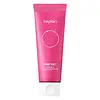What's inside
What's inside
 Key Ingredients
Key Ingredients

 Benefits
Benefits

 Concerns
Concerns

 Ingredients Side-by-side
Ingredients Side-by-side

Houttuynia Cordata Flower/Leaf/Stem Water
AntimicrobialGlycerin
HumectantSodium Cocoyl Glycinate
CleansingWater
Skin ConditioningSodium Lauroyl Glutamate
Disodium Cocoamphodiacetate
CleansingCoco-Glucoside
CleansingDecyl Glucoside
CleansingHectorite
AbsorbentSodium Chloride
Masking1,2-Hexanediol
Skin ConditioningBetaine Salicylate
AntimicrobialPotassium Benzoate
PreservativeHouttuynia Cordata Powder
Skin ConditioningPolyquaternium-67
Acrylates/C10-30 Alkyl Acrylate Crosspolymer
Emulsion StabilisingButylene Glycol
HumectantGardenia Florida Fruit Extract
Skin ConditioningDextrin
AbsorbentDisodium EDTA
Eucalyptus Globulus Leaf Oil
PerfumingEthylhexylglycerin
Skin ConditioningSodium Acetate
BufferingIsopropyl Alcohol
SolventPinus Palustris Leaf Extract
TonicUlmus Davidiana Root Extract
Skin ConditioningOenothera Biennis Flower Extract
AstringentPueraria Lobata Root Extract
HumectantPentylene Glycol
Skin ConditioningCapryloyl Salicylic Acid
ExfoliatingTocopherol
AntioxidantHydrolyzed Hyaluronic Acid
HumectantHyaluronic Acid
HumectantHydrolyzed Sodium Hyaluronate
Skin ConditioningSodium Hyaluronate
HumectantPotassium Hyaluronate
Skin ConditioningHydroxypropyltrimonium Hyaluronate
Sodium Hyaluronate Crosspolymer
HumectantSodium Acetylated Hyaluronate
HumectantQuercetin
AntioxidantHouttuynia Cordata Flower/Leaf/Stem Water, Glycerin, Sodium Cocoyl Glycinate, Water, Sodium Lauroyl Glutamate, Disodium Cocoamphodiacetate, Coco-Glucoside, Decyl Glucoside, Hectorite, Sodium Chloride, 1,2-Hexanediol, Betaine Salicylate, Potassium Benzoate, Houttuynia Cordata Powder, Polyquaternium-67, Acrylates/C10-30 Alkyl Acrylate Crosspolymer, Butylene Glycol, Gardenia Florida Fruit Extract, Dextrin, Disodium EDTA, Eucalyptus Globulus Leaf Oil, Ethylhexylglycerin, Sodium Acetate, Isopropyl Alcohol, Pinus Palustris Leaf Extract, Ulmus Davidiana Root Extract, Oenothera Biennis Flower Extract, Pueraria Lobata Root Extract, Pentylene Glycol, Capryloyl Salicylic Acid, Tocopherol, Hydrolyzed Hyaluronic Acid, Hyaluronic Acid, Hydrolyzed Sodium Hyaluronate, Sodium Hyaluronate, Potassium Hyaluronate, Hydroxypropyltrimonium Hyaluronate, Sodium Hyaluronate Crosspolymer, Sodium Acetylated Hyaluronate, Quercetin
Water
Skin ConditioningGlycerin
HumectantPotassium Stearate
CleansingPotassium Myristate
EmulsifyingPotassium Palmitate
EmulsifyingPotassium Laurate
EmulsifyingStearic Acid
CleansingMyristic Acid
CleansingPalmitic Acid
EmollientNiacinamide
SmoothingUric Acid
BufferingHibiscus Sabdariffa Flower Extract
Skin ConditioningCoco-Betaine
CleansingPolyglyceryl-3 Distearate
EmulsifyingSalicylic Acid
MaskingGlyceryl Stearate
EmollientSodium Chloride
MaskingMannitol
HumectantPolyquaternium-67
Sodium Cocoyl Alaninate
Opuntia Coccinellifera Fruit Extract
Skin ConditioningGlyceryl Stearate Citrate
EmollientMicrocrystalline Cellulose
Absorbent1,2-Hexanediol
Skin ConditioningGardenia Florida Fruit Extract
Skin ConditioningSucrose
HumectantDextrin
AbsorbentZea Mays Starch
AbsorbentHydroxypropyl Methylcellulose
Emulsion StabilisingArachidic Acid
CleansingCI 77491
Cosmetic ColorantSodium Acetate
BufferingOleic Acid
EmollientMineral Salts
Skin ConditioningSodium Hyaluronate
HumectantPanthenol
Skin ConditioningGaultheria Procumbens Leaf Extract
PerfumingCitric Acid
BufferingAllantoin
Skin ConditioningWater, Glycerin, Potassium Stearate, Potassium Myristate, Potassium Palmitate, Potassium Laurate, Stearic Acid, Myristic Acid, Palmitic Acid, Niacinamide, Uric Acid, Hibiscus Sabdariffa Flower Extract, Coco-Betaine, Polyglyceryl-3 Distearate, Salicylic Acid, Glyceryl Stearate, Sodium Chloride, Mannitol, Polyquaternium-67, Sodium Cocoyl Alaninate, Opuntia Coccinellifera Fruit Extract, Glyceryl Stearate Citrate, Microcrystalline Cellulose, 1,2-Hexanediol, Gardenia Florida Fruit Extract, Sucrose, Dextrin, Zea Mays Starch, Hydroxypropyl Methylcellulose, Arachidic Acid, CI 77491, Sodium Acetate, Oleic Acid, Mineral Salts, Sodium Hyaluronate, Panthenol, Gaultheria Procumbens Leaf Extract, Citric Acid, Allantoin
Ingredients Explained
These ingredients are found in both products.
Ingredients higher up in an ingredient list are typically present in a larger amount.
1,2-Hexanediol is a synthetic liquid and another multi-functional powerhouse.
It is a:
- Humectant, drawing moisture into the skin
- Emollient, helping to soften skin
- Solvent, dispersing and stabilizing formulas
- Preservative booster, enhancing the antimicrobial activity of other preservatives
Dextrin is used to thicken a product and helps bind ingredients together. It is created from starch and glycogen.
As an emulsifier, dextrin prevents ingredients from separating. This helps elongate a product's shelf life.
Studies show coating UV filters with dextrin prevents these ingredients from being absorbed. This helps UV ingredients last longer on the skin.
Learn more about DextrinWe don't have a description for Gardenia Florida Fruit Extract yet.
Glycerin is already naturally found in your skin. It helps moisturize and protect your skin.
A study from 2016 found glycerin to be more effective as a humectant than AHAs and hyaluronic acid.
As a humectant, it helps the skin stay hydrated by pulling moisture to your skin. The low molecular weight of glycerin allows it to pull moisture into the deeper layers of your skin.
Hydrated skin improves your skin barrier; Your skin barrier helps protect against irritants and bacteria.
Glycerin has also been found to have antimicrobial and antiviral properties. Due to these properties, glycerin is often used in wound and burn treatments.
In cosmetics, glycerin is usually derived from plants such as soybean or palm. However, it can also be sourced from animals, such as tallow or animal fat.
This ingredient is organic, colorless, odorless, and non-toxic.
Glycerin is the name for this ingredient in American English. British English uses Glycerol/Glycerine.
Learn more about GlycerinWe don't have a description for Polyquaternium-67 yet.
We don't have a description for Sodium Acetate yet.
Chances are, you eat sodium chloride every day. Sodium Chloride is also known as table salt.
This ingredient has many purposes in skincare: thickener, emulsifier, and exfoliator.
You'll most likely find this ingredient in cleansers where it is used to create a gel-like texture. As an emulsifier, it also prevents ingredients from separating.
There is much debate on whether this ingredient is comedogenic. The short answer - comedogenic ratings don't tell the whole story. Learn more about comegodenic ratings here.
The concensus about this ingredient causing acne seems to be divided. Research is needed to understand if this ingredient does cause acne.
Scrubs may use salt as the primary exfoliating ingredient.
Learn more about Sodium ChlorideSodium Hyaluronate is hyaluronic acid's salt form. It is commonly derived from the sodium salt of hyaluronic acid.
Like hyaluronic acid, it is great at holding water and acts as a humectant. This makes it a great skin hydrating ingredient.
Sodium Hyaluronate is naturally occurring in our bodies and is mostly found in eye fluid and joints.
These are some other common types of Hyaluronic Acid:
Learn more about Sodium HyaluronateWater. It's the most common cosmetic ingredient of all. You'll usually see it at the top of ingredient lists, meaning that it makes up the largest part of the product.
So why is it so popular? Water most often acts as a solvent - this means that it helps dissolve other ingredients into the formulation.
You'll also recognize water as that liquid we all need to stay alive. If you see this, drink a glass of water. Stay hydrated!
Learn more about Water